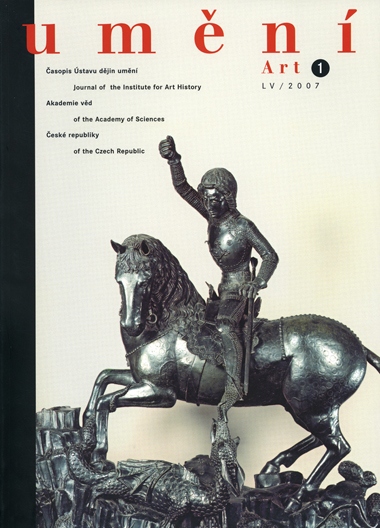Hynek Látal
Úvahy nad objevenou disertací Viktora Kotrby
The aim of this account is to stimulate discussion of the methodological legacy of Viktor Kotrba (7. 5. 1906 Günzburg - 3. 9. 1973 Prague), who has been neglected, for example, in comparison with his contemporary Václav Mencl (1905-1978). The article is based on materials in Kotrba's papers, deposited at the Institute for Art History, Academy of Sciences of the Czech Republic, in Prague, including a hitherto unknown manuscript of Kotrba's dissertation. Although the final form of this work has been lost, the manuscript makes an inspiring contribution to Central European research on late Gothic architecture. An article on architecture, from the exhibition catalogue South Bohemian Late Gothic 1450-1530 (1965) is an important component of the work. Excerpts from the literature and notes on the field research offer insight into Kotrba's standard research practices and help one to reconstruct his intentions and methods. One example is his interest in the scholar and priest Václav Fabri, who, inspired by his knowledge of the Saxon milieu, initiated the ambitious renovation of the parish Church of St Nicholas in České Budějovice at the beginning of the 16th century. In this instance, rather than looking at form, Kotrba considered the building, no longer extant, from the perspective of the reconstructible visual experience of the patron. Similarly, Kotrba's interest in the reception of medieval artworks by their contemporary consumers-evident in his attention to selected passages from Silvio Piccolomini's Historia Bohemica-prefigured certain trends in current art history studies of the medieval period. With a broad overview, the dissertation focuses on the contemporaneous body of knowledge of the development and key figures of late Gothic architecture, in the relevant regions of the Holy Roman Empire. On account of the emphasis on the issue of construction and building approaches, as opposed to tracing stylistic transformations of the art of vaulting, Kotrba's text can be included among the standard Central European art history works on late Gothic architecture. In addition, in places the text provides a wealth of detailed observations, as well as prefiguring the abovementioned progressive trends. A book edition of Kotrba's dissertation, with commentary on questions still relevant today, would be, after forty-six years, a dignified Czech counterpart to the famous monograph on Benedikt Ried written by Götz Fehr, who was, in a certain sense, Kotrba's counterpart in Germany.
Full-text in the Digital Library of the Czech Academy of Sciences:
https://kramerius.lib.cas.cz/uuid/uuid:1d4f70da-6ac9-461d-b85a-f00170169c9f
< back

